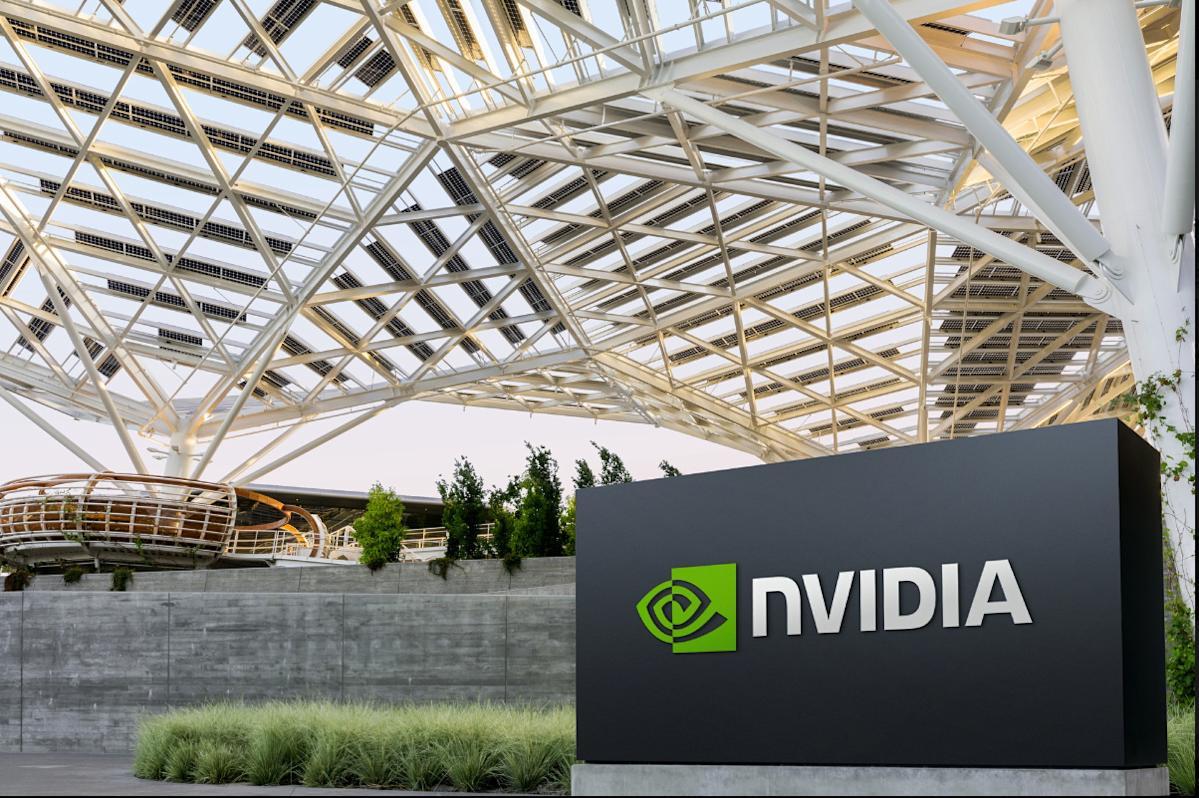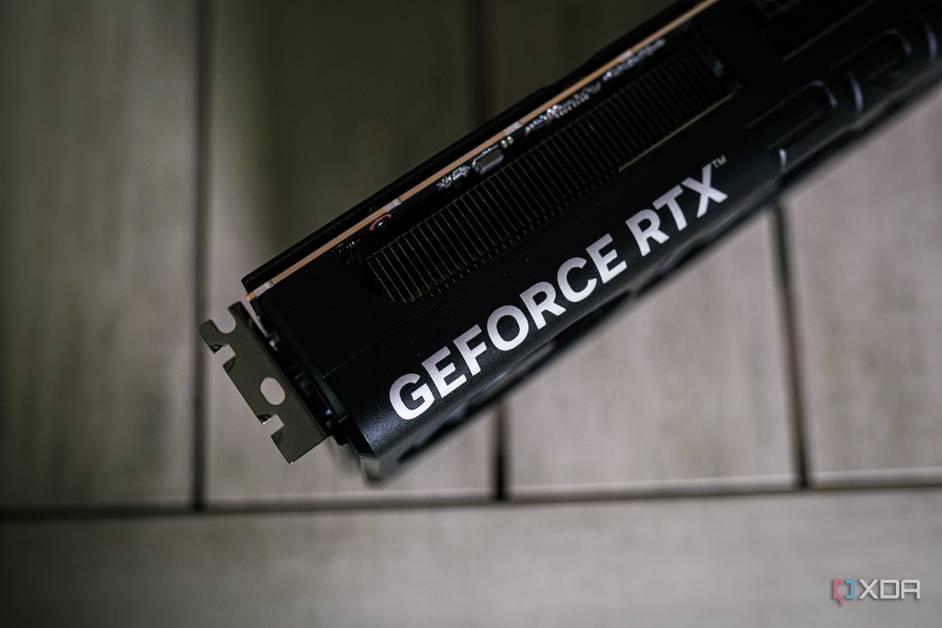Global GPU Market Set to Reach $100 Billion in 2024, Driven by AI Boom
3 Sources
3 Sources
[1]
Global GPU revenue to reach $100 billion by the end of the year, driven by AI
According to Jon Peddie Research, the global graphics processor unit (GPU) market will be worth almost $100 billion by the end of the year - an astonishing figure that factors in the current AI boom and highly sought-after GPUs from NVIDIA. The report notes that GPUs are becoming increasingly ubiquitous in technology and "can be found in almost every industrial, scientific, commercial, and consumer product made today." This includes game consoles, PCs, data centers, handhelds, VR, wearables, smart TVs, vehicles, and more. The report also acknowledges the rise of integrated GPUs, as seen in the latest Apple, AMD, Intel, and Qualcomm processors. The report quickly points out that GPUs for data centers are "low-volume compared to other market segments," but when an NVIDIA GPU can cost tens of thousands of dollars, and demand for them is through the roof - AI is a big part of the GPU market that "will exceed $98.5 billion in 2024." NVIDIA's GPU sales for the year could top $90 billion, so the bulk of this figure seems to directly relate to what's happening in the land of Blackwell, NVIDIA's latest GPU architecture. To add a little more perspective, AMD's AI GPU sales are expected to top $3 billion. The report also outlines the 20 companies and seven IP vendors supplying the market with discrete, integrated, and embedded GPUs. They are: Naturally, most of these companies are creating GPUs for the AI data center market rather than desktop PCs built for gaming. Regarding PC gaming, we're on the cusp of a new generation of desktop, discrete, and mobile GPUs from NVIDIA, AMD, and Intel, so it's safe to say that the GPU market isn't going anywhere.
[2]
Global GPU market to hit $100 billion in 2024: JPR
Graphics processing units (GPUs) are ubiquitous and found in many of the devices that we interact with on a daily basis. In addition, GPUs are used for AI and supercomputer workloads, and high-end processors from companies like AMD or Nvidia can cost $10,000-$30,000 or more. Demand for these units is increasing rapidly. As a result, the revenue of GPU developers is growing, and this year the global GPU market is expected to exceed $98.5 billion, according to Jon Peddie Research. Currently, there are 20 companies and seven IP vendors developing discrete, integrated, and embedded GPUs, JPR reports. Most of these graphics processors are entry-level integrated GPUs, and only a few companies develop standalone GPUs for gamers including the best graphics cards. However, most of the revenue is earned from GPUs that are not used for graphics: sales of AI and HPC GPUs total only several million units per year, but since they are sold for tens of thousands of dollars per unit, they bring in tens of billions for Nvidia and billions for AMD. In just two quarters of its fiscal 2025, Nvidia earned $42 billion from its AI and HPC GPUs, and for the whole year, sales of its compute GPUs could exceed $90 billion. AMD expects sales of its AI GPUs to exceed $3 billion. It is hard to estimate the revenues of companies like Biren or MetaX, but we doubt their compute GPU sales come close to those of AMD. "Graphics processing units (GPUs) have become ubiquitous and can be found in almost every industrial, scientific, commercial, and consumer product made today," said Dr. Jon Peddie, the president of Jon Peddie Research. "Some market segments, like AI, have grabbed headlines because of their rapid growth and high average selling price (ASP), but they are low-volume compared to other market segments." However, while the market for AI GPUs is low volume compared to other segments, all newcomers to the GPU market -- particularly those from China -- are focused on datacenter AI GPUs rather than on GPUs for gaming. Of course, these companies face restrictions from the U.S. government, which does not want China to access leading-edge AI technologies, but apparently, they are willing to take the risks as the potential of the AI market is very significant.
[3]
GPU sales to hit $100 billion in 2024
You get three guesses as to which company is making most of that money, but you'll only need one. It's raining money, at least if you're selling graphics cards. According to recent industry research, the market for graphics processing units is set to hit about $100 billion in 2024. It's a massive shift in a market segment that was already growing quite quickly. But don't get too excited, gamers. We aren't the ones buying. Almost all of that growth is driven by an explosion in AI infrastructure, according to Jon Peddie Research in a new market report, which confirms that Nvidia is reaping most of the benefit in this change. That's hardly surprising if you've even been glancing at the news lately. Selling AI hardware for data centers, just a couple of years after selling some of the same hardware for cryptocurrency generation, has driven Nvidia to become the most valuable company on the planet. (By market cap, anyway. There are other ways to measure corporate value, but that's an argument for bigger brains than mine.) For a bit of broad context on this $100 billion number, the estimated worldwide revenue for smartphones in 2023 was about $500 billion according to Statista, and vehicle sales totaled about $2.1 trillion for the top 20 manufacturers. Nvidia is definitely the go-to vendor for any company that wants to rapidly scale up flexible, AI-focused data centers, if you have the scratch. Nvidia's next-generation AI hardware is projected to cost between $30,000 and $40,000 per unit at the top tier. That's the kind of "big iron" that makes an RTX 4090 look affordable, and it's partly why the headline of this article is in dollars rather than concrete chips or cards. But, of course, Nvidia isn't the only player in the market right now, even if it's absolutely dominating at the moment. Intel, AMD, Qualcomm, and Broadcom are all nipping at Nvidia's heels, and even some surprise players like Apple and Meta (Facebook) get a mention in the short form of Jon Peddie's report. It's worth pointing out that selling chips for AI data centers isn't the only way to make some scratch in GPUs. Naturally, you've got both discrete and integrated graphics for PCs, smartphones, and tablets, game consoles, and even more specialized hardware going into cars, VR headsets, and wearables like smartwatches. As the report says, "GPUs have become ubiquitous and can be found in almost every industrial, scientific, commercial, and consumer product made today." Total volume for the AI portion of the market is actually comparatively low, even if it's driving the lion's share of the profits. Long story short: People are still going to play games and stream video, even if they're talking to ChatGPT to help stem the crushing tide of digital isolation while they do it. Someone has to make and sell that hardware. It'll be interesting to see how the focus on high-margin business-to-business sales affects Nvidia's output in 2025, and how the rest of the market adapts to that. After all, Nvidia can only make so many chips, and it's not going to be too concerned with the $500 profit on a top-of-the-line RTX 5090 Ti Super-Duper Magnum MAX if it can more reliably make $10,000 selling a chip to the next AI startup that's splashing around in buckets of angel investor cash. That could open up some space for the likes of AMD, Intel, and others to finally try and sell more GPUs to consumers, especially at the mid-tier and low-end. But this is all navel-gazing. The only thing we can say for sure is that there's going to be a lot of money made selling GPUs in the near future.
Share
Share
Copy Link
The global GPU market is expected to hit $100 billion by the end of 2024, largely due to the surge in AI technology demand. NVIDIA leads the charge, with its AI GPU sales potentially exceeding $90 billion.

GPU Market Soars to New Heights
The global graphics processor unit (GPU) market is on track to reach a staggering $100 billion by the end of 2024, according to a recent report by Jon Peddie Research (JPR)
1
2
. This remarkable growth is primarily fueled by the ongoing artificial intelligence (AI) boom and the high demand for GPUs, particularly those produced by NVIDIA.NVIDIA Dominates the AI GPU Market
NVIDIA stands at the forefront of this market surge, with its GPU sales for the year potentially exceeding $90 billion
1
. This figure underscores NVIDIA's dominance in the AI GPU sector, where its high-end processors can cost between $10,000 and $30,000 or more2
. The company's success is further evidenced by its recent financial performance, with earnings of $42 billion from AI and HPC GPUs in just two quarters of its fiscal 20252
.Diverse Applications Driving Growth
While AI applications are grabbing headlines, JPR's report highlights the ubiquity of GPUs across various sectors. Dr. Jon Peddie, president of Jon Peddie Research, notes, "GPUs have become ubiquitous and can be found in almost every industrial, scientific, commercial, and consumer product made today"
2
3
. This includes applications in game consoles, PCs, data centers, handhelds, VR, wearables, smart TVs, and vehicles1
.Market Landscape and Competition
The GPU market currently consists of 20 companies and seven IP vendors developing discrete, integrated, and embedded GPUs
1
2
. While NVIDIA leads in AI GPU sales, other players are also making significant strides:- AMD expects its AI GPU sales to exceed $3 billion
1
2
. - Intel, Qualcomm, Broadcom, Apple, and Meta are also mentioned as key players in the market
3
. - Chinese companies are focusing on datacenter AI GPUs, despite facing restrictions from the U.S. government
2
.
Related Stories
Impact on Consumer GPU Market
The focus on high-margin, business-to-business sales in the AI sector could potentially impact the consumer GPU market. As NVIDIA prioritizes its lucrative AI chip sales, it may create opportunities for competitors like AMD and Intel to gain ground in the consumer GPU space, particularly in mid-tier and low-end segments
3
.Future Outlook
As the GPU market continues to evolve, it will be interesting to observe how companies balance their focus between AI-driven data center GPUs and consumer-oriented products. The current trend suggests that while AI applications are driving significant revenue, the broader GPU market remains diverse and essential across multiple industries
1
2
3
.References
Summarized by
Navi
[2]
[3]
Related Stories
AMD's AI GPU Business Surges, Rivaling Its CPU Operations in Less Than a Year
31 Oct 2024•Technology

Nvidia's Q2 FY2026 Results: Record-Breaking $46.7B Revenue Driven by AI Boom and Gaming Success
29 Aug 2025•Technology

Nvidia's AI Dominance Overshadows Gaming GPU Shortages in Record-Breaking Fiscal Year
28 Feb 2025•Business and Economy

Recent Highlights
1
Google launches Gemini 3 Flash as default AI model, delivering speed with Pro-grade reasoning
Technology

2
OpenAI launches GPT Image 1.5 as AI image generator war with Google intensifies
Technology

3
OpenAI launches ChatGPT app store, opening doors for third-party developers to build AI-powered apps
Technology





